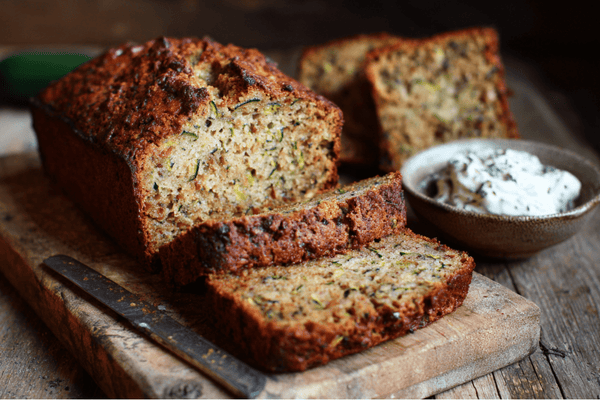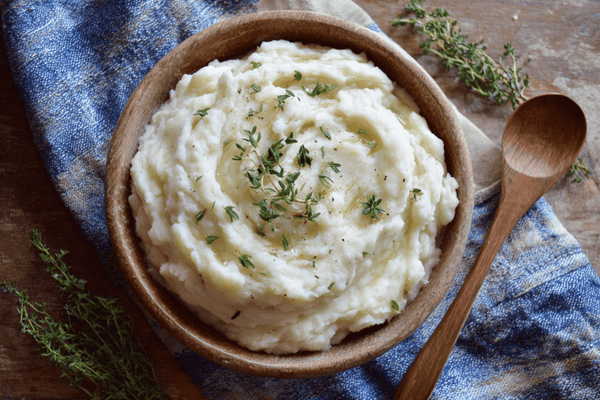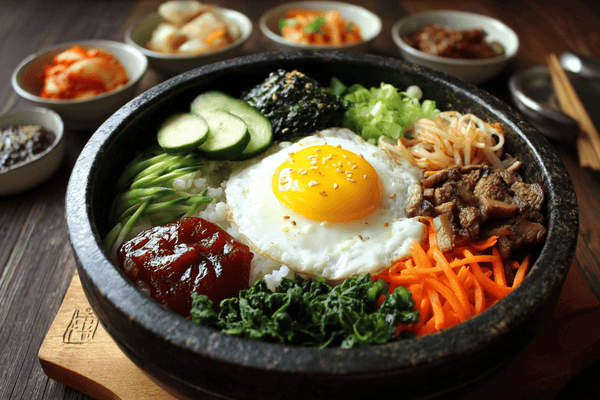
We're about to embark on a journey that's as old as time itself... well, almost. We're talking about patina on knives, that mysterious, beautiful and often controversial coating that has graced the blades of our favorite cutting tools for centuries. Whether you love it or loathe it, there's no denying that patina has played a major role in the world of knives, and it's time to shed some light on this fascinating topic."
Table of contents
- What is patina on knives and why it's important
- The role of patina in knife history and cultural significance
- How patina forms on a knife and its effects on the blade
- Different types of patina and their unique characteristics
- Maintenance of patina on a knife and tips for preventing damage
- The benefits and drawbacks of having a patina on a knife
- Comparison between factory-made and natural patina
- How patina can affect the value of a knife
- How to create a patina on a knife deliberately
- Final Thoughts
What is patina on knives and why it's important
Patina on knives refers to the natural wear and oxidation that occurs on the surface of the blade over time. It forms as a result of exposure to air, moisture, and other elements, creating a unique and distinct appearance that can range from light brown to dark black.
Patina on a knife is important for several reasons. Firstly, it provides a layer of protection for the blade, preventing further corrosion and damage. Secondly, it enhances the aesthetic appeal of the knife, adding character and giving it a unique look. A well-formed patina on a knife also adds to its historical significance and value.
Moreover, patina can also indicate the usage and age of the knife, which can be useful information for collectors and knife enthusiasts.
The role of patina in knife history and cultural significance
Patina has played an important role in knife history and cultural significance for centuries. Here are some ways in which patina has affected knife history and cultural significance:
-
Cultural traditions: In many cultures, knives have been an important tool for everyday life, and patina has played a role in the cultural traditions and rituals associated with these tools. For example, in some Native American cultures, patina was used to enhance the beauty and spiritual significance of knives used in hunting and ceremony.
-
Historical significance: Patina can also add historical significance to a knife, as it can tell a story about the knife's journey and the experiences it has had over time. This can make knives with patina more valuable to collectors and those who appreciate the history and authenticity of knives.
-
Age: Patina can also indicate the age of a knife, and older knives with well-maintained patina are often more valuable than newer knives without patina.
-
Aesthetic appeal: Patina can add character and unique aesthetic appeal to a knife, making it a one-of-a-kind item and potentially increasing its value.
-
Crafting traditions: Patina has also played a role in the crafting traditions of knives, as some craftsmen deliberately create patina to enhance the appearance and value of their knives.
Patina has played an important role in knife history and cultural significance, including cultural traditions, historical significance, age, aesthetic appeal, and crafting traditions. Whether patina adds to the value of a knife will depend on various factors, including the specific knife in question, the patina itself, and the market conditions at the time.
How patina forms on a knife and its effects on the blade
Patina forms on a knife as a result of exposure to air, moisture, and other elements over time. The oxidation process occurs as the metal reacts with oxygen, causing a change in the chemical composition of the blade and the formation of a thin layer of corrosion.
The speed and intensity of the patina formation on a knife depend on various factors such as the type of metal used, the environment the knife is exposed to, and the frequency of use. For example, high-carbon steels are more prone to patina formation than low-carbon steels, while frequent use and exposure to moisture and humid environments can accelerate the process.
The effects of patina on a knife's blade can be both positive and negative. On the positive side, patina provides a layer of protection against further corrosion and damage, preventing the metal from rusting and staining. Patina also adds character and aesthetic appeal to the knife, giving it a unique look and a sense of history and heritage.
On the negative side, patina can make the blade duller and less reflective over time, reducing its ability to hold an edge. It can also make the blade more brittle, making it more susceptible to chipping or cracking.
Different types of patina and their unique characteristics
Patina is a natural oxidation process that occurs on the surface of a knife over time, and its appearance can vary depending on the type of metal, the environment the knife is exposed to, and the frequency of use. Here are some common types of patina and their unique characteristics:
-
Light brown patina: This type of patina is light in color and forms as a result of minimal exposure to air and moisture. It adds a warm and earthy tone to the knife and provides minimal protection against corrosion.
-
Dark brown patina: This type of patina is darker in color and forms as a result of increased exposure to air and moisture. It provides better protection against corrosion compared to light brown patina and has a more rugged and lived-in look.
-
Black patina: This type of patina is the darkest in color and forms as a result of extended exposure to air and moisture. It provides the best protection against corrosion and gives the knife a sleek and dramatic look.
-
Rainbow patina: This type of patina is characterized by a rainbow-like pattern of colors that form on the blade. It is rare and can form as a result of exposing the knife to different elements, such as chemicals or salts, that cause the metal to react and form a unique patina.
-
Blue patina: This type of patina is characterized by a blue or blue-grey color that forms on the blade. It is common in high-carbon steels and forms as a result of exposure to moisture and high temperatures.
-
Green patina: This type of patina is characterized by a green color that forms on the blade. It is common in copper and brass alloys and forms as a result of exposure to moisture and the environment.
Maintenance of patina on a knife and tips for preventing damage
Proper maintenance of patina on a knife is important to ensure its longevity and protect against damage. Here are some tips for maintaining patina on a knife and preventing damage:
-
Store properly: Store the knife in a dry place, away from moisture and direct sunlight, to prevent the patina from fading or corroding further.
-
Clean regularly: Clean the knife regularly with a soft cloth and a mild detergent to remove any dirt or residue that could damage the patina. Avoid using abrasive cleaners or materials that could scratch the surface.
-
Use a protective oil: Apply a thin layer of food-safe oil, such as mineral oil or vegetable oil, to the blade to protect the patina and prevent further oxidation.
-
Avoid exposing to harsh elements: Avoid exposing the knife to harsh elements, such as chemicals, salt, or extreme heat, that could damage the patina.
-
Handle with care: Handle the knife with care and avoid dropping it or exposing it to impact that could damage the blade and the patina.
-
Use a sharpening stone: Use a sharpening stone to sharpen the blade, rather than a honing rod, which can scratch the surface and damage the patina.
-
Clean after use: Clean the knife after use and dry it thoroughly to prevent moisture from causing further corrosion and damage to the patina.
The benefits and drawbacks of having a patina on a knife
Having a patina on a knife can offer a number of benefits, as well as a few drawbacks. Here are some of the key benefits and drawbacks of having a patina on a knife:
Benefits:
-
Aesthetic appeal: Patina can add character and unique aesthetic appeal to a knife, making it a one-of-a-kind item.
-
Protection against corrosion: Patina forms a protective layer on the surface of the blade, helping to prevent further corrosion and damage from moisture and the environment.
-
Increased value: Over time, patina can increase the value of a knife, especially if it is well-maintained and has a unique and interesting appearance.
-
Historical significance: Patina can also add historical significance to a knife, as it can tell a story about the knife's journey and the experiences it has had over time.
Drawbacks:
-
Reduced sharpness: Patina can also cause the blade to become dull over time, reducing its sharpness and performance.
-
Decreased uniformity: Patina can also cause the blade to become less uniform in appearance, which may detract from its aesthetic appeal.
-
Difficulty cleaning: Cleaning a knife with patina can be more difficult, as the protective layer can trap dirt and residue, making it harder to remove.
Having a patina on a knife can offer a number of benefits, including aesthetic appeal, protection against corrosion, increased value, and historical significance. However, it can also have a few drawbacks, such as reduced sharpness, decreased uniformity, and difficulty cleaning.
Ultimately, whether the benefits or drawbacks of having a patina on a knife outweigh each other will depend on personal preference and the specific knife in question.
Comparison between factory-made and natural patina
A comparison between factory-made and natural patina on a knife can reveal some key differences between the two. Here are some key differences between factory-made and natural patina:
-
Appearance: Factory-made patina can often have a more uniform and consistent appearance, while natural patina may be more unique and have a more varied and textured appearance.
-
Time to form: Factory-made patina is often created quickly in a controlled environment, while natural patina can take years or even decades to form on a knife through natural use and exposure to the environment.
-
Longevity: The longevity of factory-made patina can vary depending on the quality of the materials and the manufacturing process, while natural patina is often more durable and resistant to damage.
-
Value: Natural patina can often add value to a knife, especially if it is well-maintained and has a unique and interesting appearance, while factory-made patina may have less impact on the value of a knife.
-
Authenticity: Natural patina is often seen as more authentic and adds a sense of history and character to a knife, while factory-made patina may be seen as artificial and lacking in character.
How patina can affect the value of a knife
Patina can have a significant impact on the value of a knife. Here are some ways in which patina can affect the value of a knife:
-
Aesthetic appeal: A well-maintained patina can add character and unique aesthetic appeal to a knife, making it a one-of-a-kind item and potentially increasing its value.
-
Historical significance: Patina can also add historical significance to a knife, as it can tell a story about the knife's journey and the experiences it has had over time. This can increase the value of the knife for collectors and those who appreciate the history and authenticity of knives.
-
Rarity: Rare or unique patina patterns can also increase the value of a knife, especially if they are well-maintained and have an interesting appearance.
-
Age: Age can also be a factor in the value of patina on a knife, as older patina can be more valuable than newer patina, especially if the knife has been well-maintained over time.
-
Condition: The overall condition of the knife and patina will also impact its value, as damage to the blade or patina can reduce the value of the knife.
How to create a patina on a knife deliberately
Creating a patina on a knife deliberately involves exposing the blade to certain elements and chemicals to produce a desired effect. Here are some steps to create a patina on a knife deliberately:
-
Choose a blade material: Some blade materials are more receptive to patina than others, so choose a blade material that is known to develop a patina easily, such as carbon steel or damascus steel.
-
Select a patina solution: There are various patina solutions available, including vinegar, mustard, egg yolks, and liver of sulfur, among others. Choose a solution that will produce the desired patina color and pattern.
-
Clean the blade: Clean the blade thoroughly to remove any oils or dirt that may interfere with the patina process.
-
Apply the patina solution: Apply the chosen patina solution to the blade using a brush or cloth, making sure to cover all surfaces of the blade evenly.
-
Allow the solution to sit: Allow the patina solution to sit on the blade for the desired amount of time, usually anywhere from a few minutes to several hours. The longer the solution sits, the more intense the patina will be.
-
Rinse the blade: Rinse the blade thoroughly with water to remove any remaining patina solution.
-
Seal the patina: To preserve the patina and prevent damage, it is recommended to seal the patina with a protective coating, such as wax or oil.
Note: Be cautious when creating a patina on a knife, as some patina solutions can be hazardous and can cause damage to the blade or your skin. It is also important to wear protective gear, such as gloves and eye protection, when working with patina solutions.
Final Thoughts
everything you ever wanted to know (and maybe a few things you didn't) about patina on knives. Whether you're a collector, a craftsperson, or just a fan of shiny things, there's no denying that patina has a special place in the world of knives.
So, the next time you're handling a knife with a stunning patina, remember that you're not just holding a tool, but a piece of history. And with that, we'll let you get back to slicing and dicing your way through life... or at least your kitchen.


